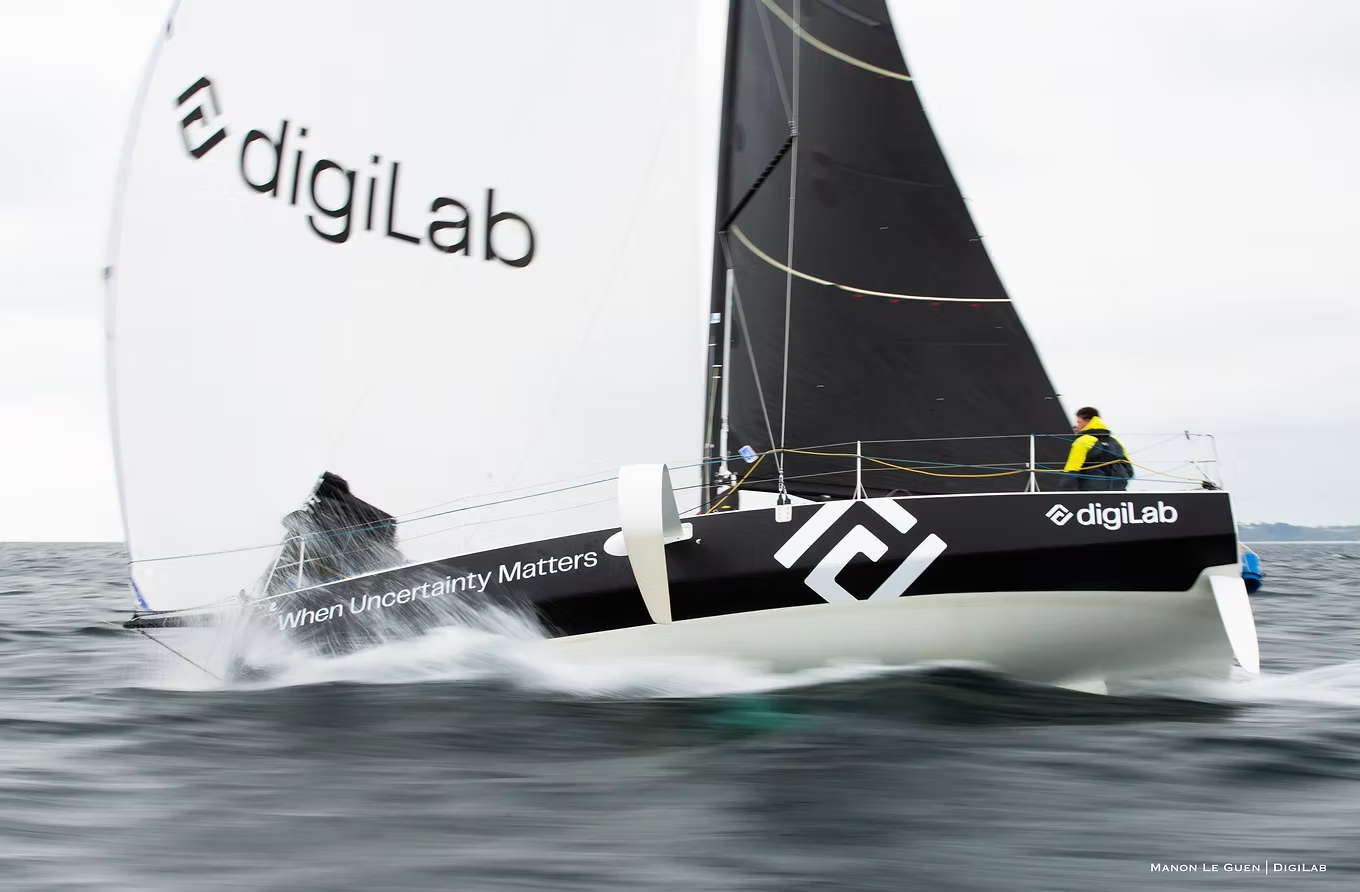Why Offshore Racing is the Ultimate Tech and Human Challenge
1 Sep 2025
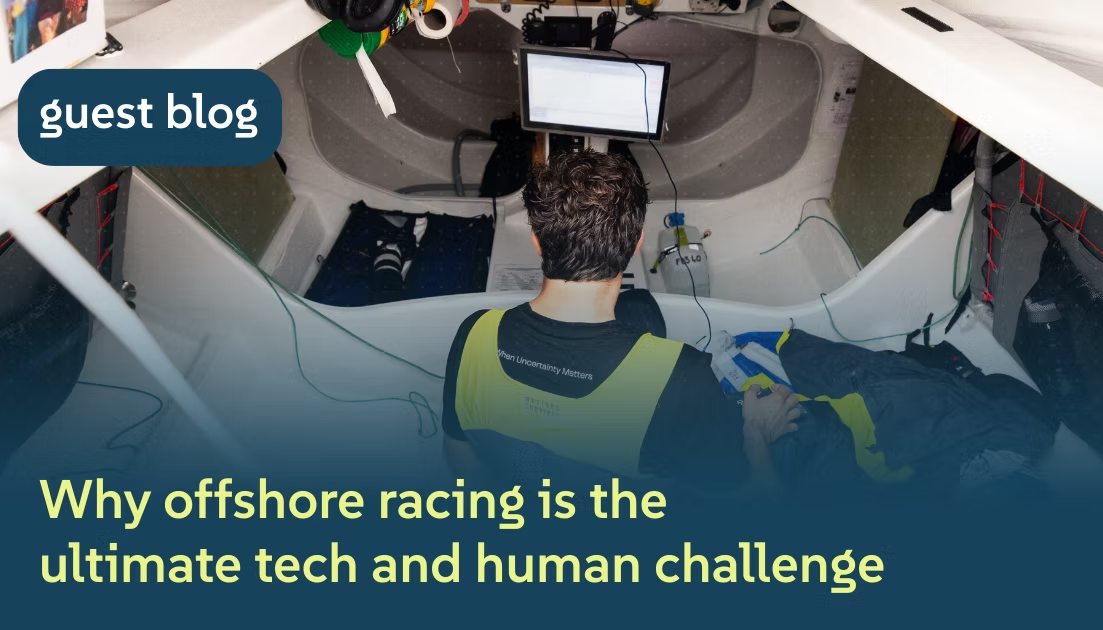
And how we’re meeting that challenge with digiLab's AI uncertainty quantification.
When people ask what Offshore Racing is, they initially imagine a high paced water sport with a lot of swashbuckling pirate action and huge waves swamping the boat. It is a lot of that. But at the elite level, it's a constantly changing maths problem, where athletes are juggling a changing set of values: True Wind Speed, Apparent Wind Angle, Speed Over Ground, whilst also juggling risk and uncertainty in terms of their optimal course considering sea state, tidal, wind conditions and your fellow competitors. What it amounts to is a very complex game of chess, in the shower, with little sleep and someone redesigning the chess board every six hours as weather files are released.
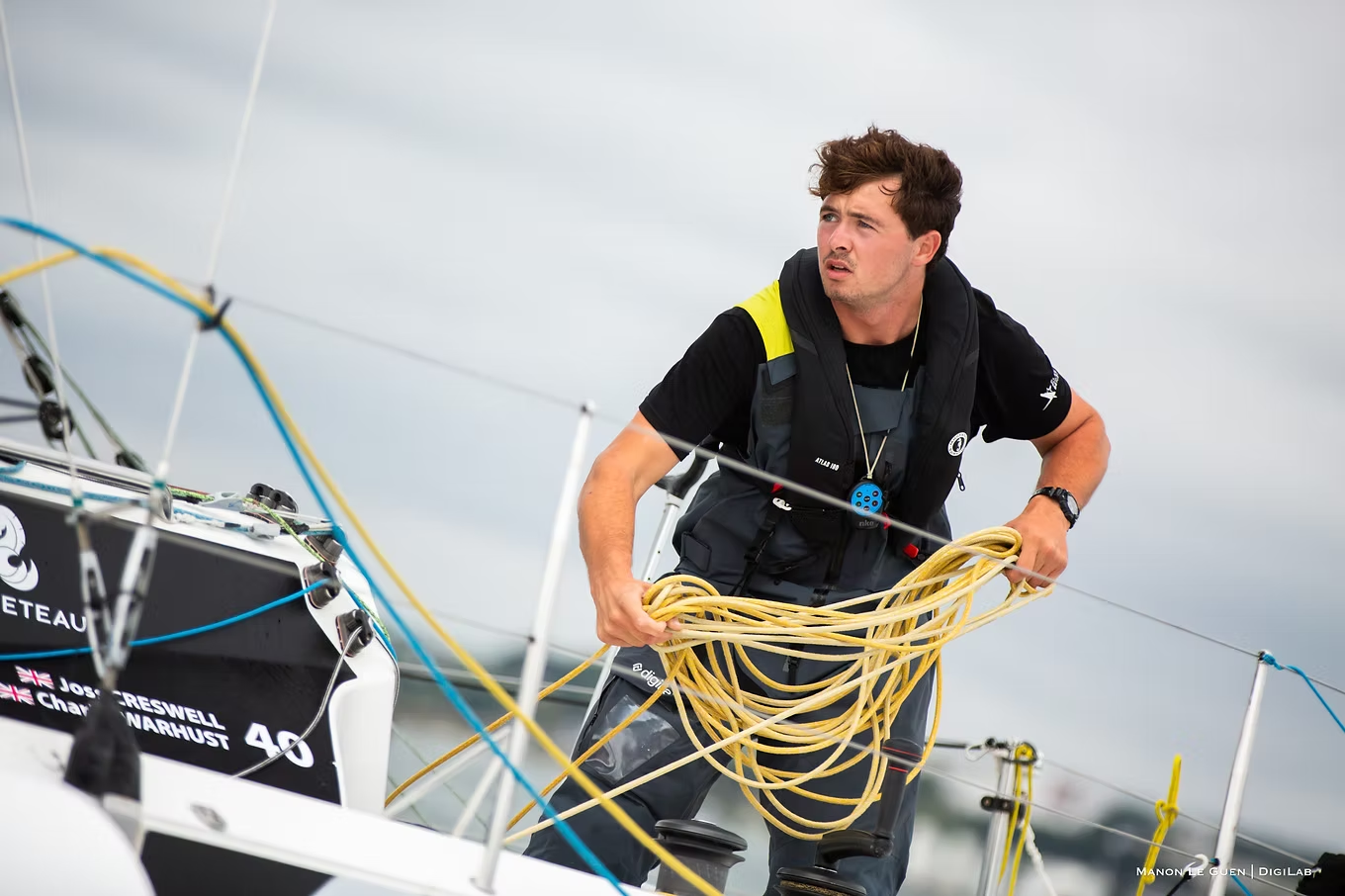
The Challenge
The Figaro 3 class - the arena we’re competing in this year - is the most famously ruthless environment for Offshore Racing. The boats are identical and the sailors embedded in the class are the best working sailors on the scene. All but one Vendee Globe solo round the world race skippers (the premier race in sailing) have been Figaro competitors.
My co-skipper Charlie Warhurst, meteorologist Ella Boxall and I, with the support of digiLab, have entered our ‘rookie’ season in the class. We've completed one race already and the next will be our ultimate challenge and by far the biggest double handed (two person) race we’ve ever done.
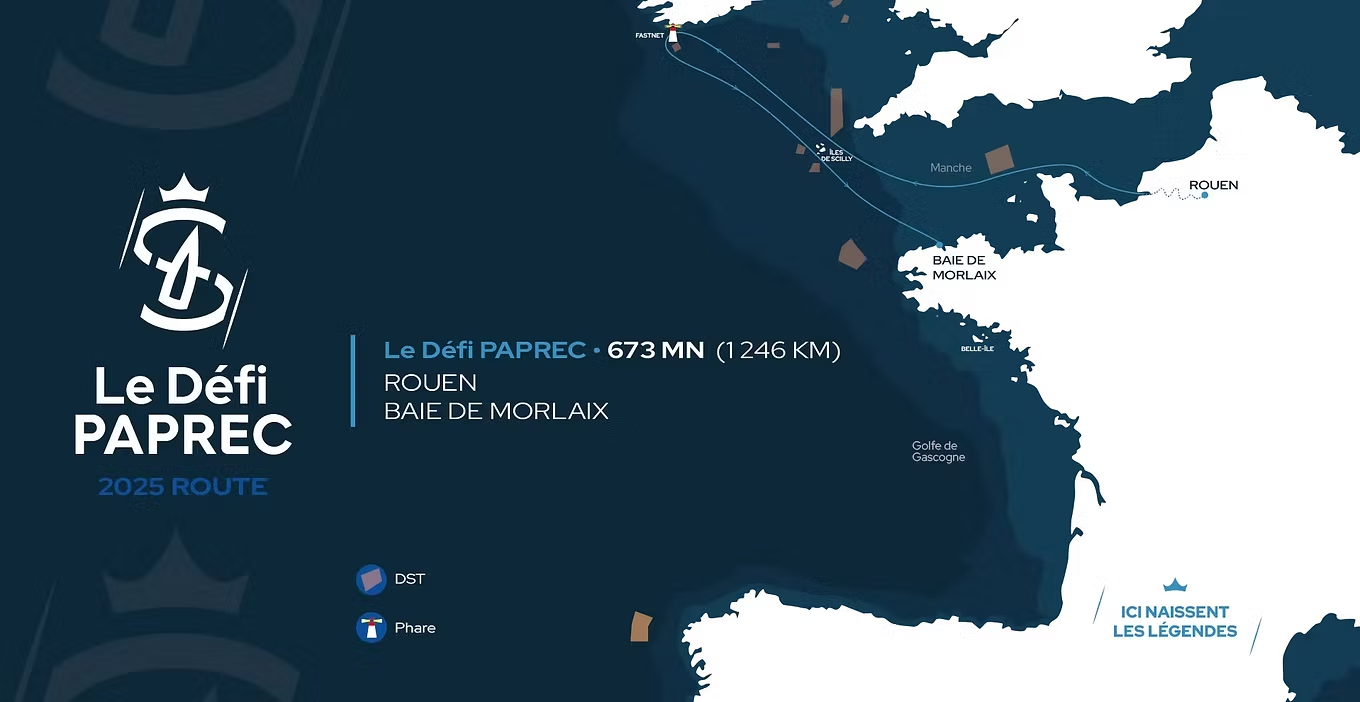
650 miles non-stop around the famously remote and harsh Fastnet Rock, the Defi Paprec is a testing ground for those looking to make it at the sports elite level. Charlie and I have sailed all our lives in the English Channel and the Westcountry and so, whilst the boat is new, and with a lot more experienced skippers, we have an intimate knowledge of the sailing area.
digiLab’s Floating Laboratory
In the last 20 years, data science has revolutionised the sport of sailing as competitors are able to log data from the boat, and more accurately predict weather conditions. Racing Navigators have become technicians, using technology which combines weather forecast data and boat ‘polars’ to chart an efficient and race-winning course. Unfortunately, there’s no way that this technology can describe and dissect the output of its calculations.
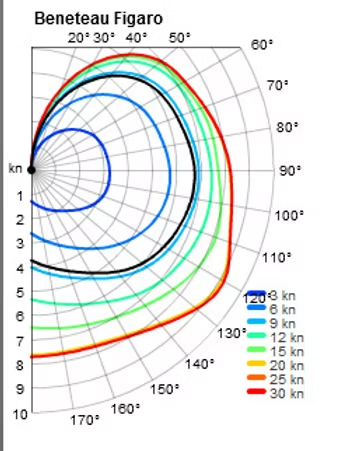
The next step is where digiLab enters the game. Every Figaro 3 is identical - same hull, same sails, same foils. The only advantage is the one you create. By using digiLab’s AI, we will be analysing the data gathered from training and previous races. digiLab, working with our meteorologist Ella Boxall, can start to quantify uncertainty within the data and give us suggested routes and a more nuanced picture of the strategic situation:
Do we gybe now? Do we take the inshore route? How well does the swell forecast match up to the live wave buoy data? Do we change sails before this squall hits or does our previous data suggest we sail better with the current sail plan?
Marine Sector Applications
The learnings from testing technology in the high stakes precision world of Offshore Racing will be hugely important to the Marine Sector. From making shipping more efficient and sustainable, to making wind farms more effective.
For me, it's cool to be a part of a sponsorship relationship which is not just about marketing and exposure. It’s actually about using the digiLab Figaro 3 as an R&D Lab and as a working example for the technology. We know that weather forecast data becomes less and less reliable as the wind speed drops, but that's not reflected in current technology.
With digiLab on board as our sponsor, we can afford the sails, coaching, and the preparation we need to line up against the very best in the world. It’s a partnership built on shared values: adaptability, precision, and performance under pressure.They’re championing young British talent in a data-driven sport and sharing our excitement in getting things done.
